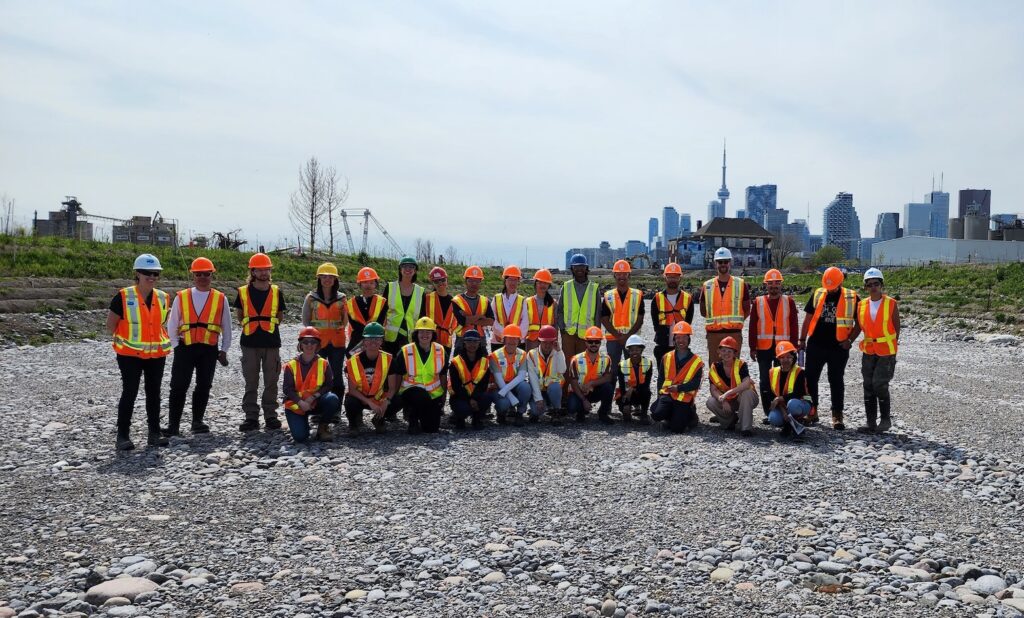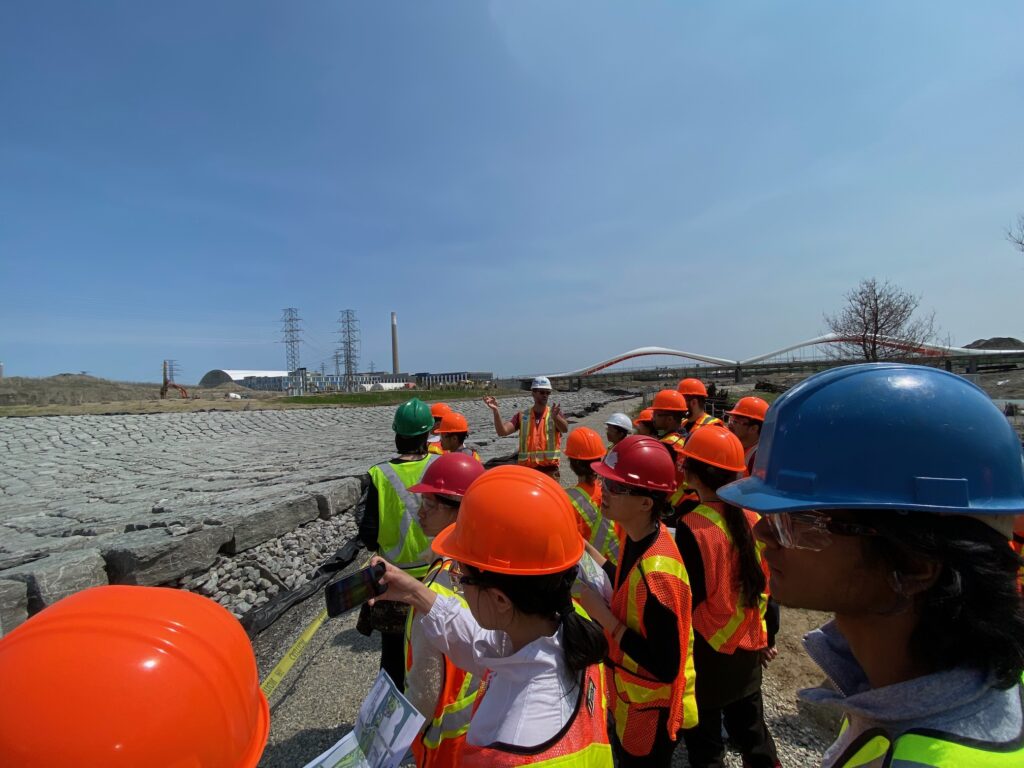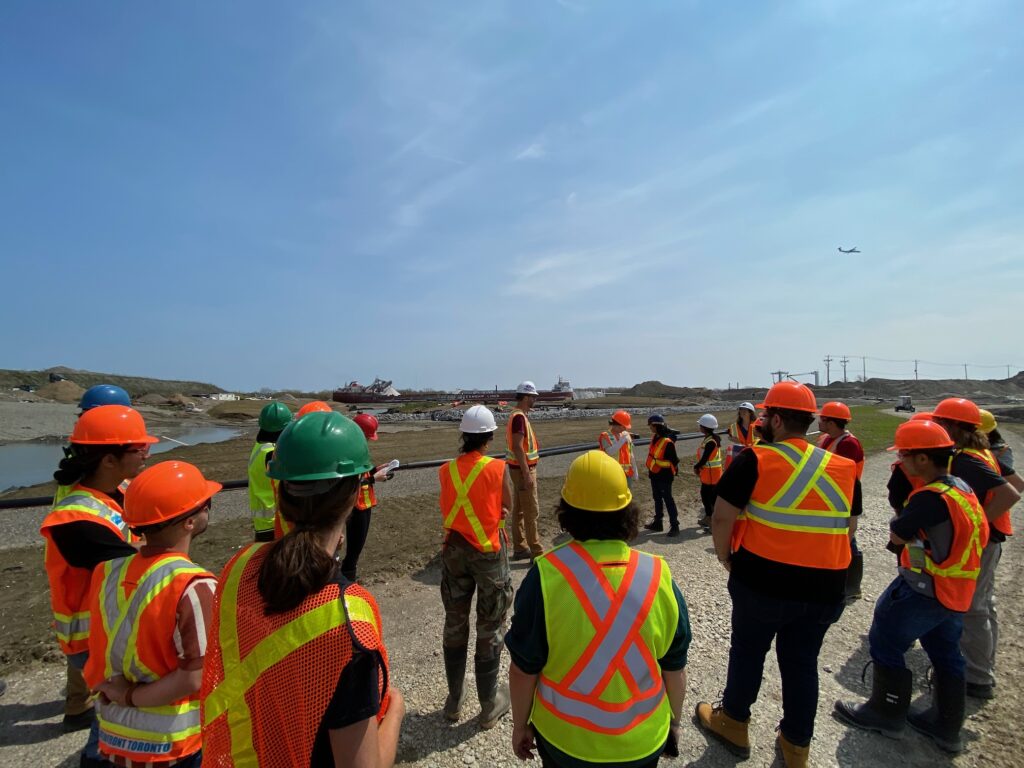
The renaturalization of the mouth of the Don River is a project to bring back part of the lower Don River to a more natural state while increasing flood protection for neighbouring land and creating new developmental spaces.
The mouth and lower Don River were used for heavy industry, most notably the storage of petrochemical hydrocarbons in the late 1800s and early 1900s. Over the years of use, the soil underneath has become contaminated. One of the major requirements for the renaturalization project was to contain, treat, and dispose of the contaminated soil. Waterfront Toronto, the lead project management group, focused on containing the contaminated soil with non-porous clay and plastic liners to keep hydrocarbons out of the new waterway. While additionally treating the less contaminated soil and reusing it for terraforming and minimising the amount of removed soil that would be dumped elsewhere.

The design of the river valley was intentionally meandering to mimic the path the river might have once taken. When Toronto first started industrialising, the lower Don River was straightened and channelized to allow for easier shipping, but this led to a lot of unforeseen consequences for the river system. The channelization removed a lot of natural habitat and caused easy flooding if sediment or debris clogged the entrance. One of the project’s requirements was to increase the width of the Don River mouth just before entering the project site. The meandering meant that the outer banks of curves would experience heavy erosion, so natural barriers like anchored wood and armoured rock banks were installed in place of concrete or steel piles to protect the edge of the river.

The development project also includes the Don Greenway, a completely sectioned-off area reserved just for marshland. Pathways have been made so that people can view and enjoy the ecosystem, but it was designed intentionally as a place with little human traffic. The area was designed to become a natural sanitary area where plants and animals could thrive undisturbed. The Greenway also acts as an emergency spillway in the event of a heavy rain event that causes flooding and a large increase in water flow through the Don River. The greenway will act to divert water into the shipping channel to protect downtown Toronto from floods.
On top of the main marshland, there are multiple smaller, one-entrance wetland pools along the river channel. Carp dams were installed to stop carp from entering and create a predator-free environment for the wetland to thrive. Stop blocks were also added so conservationists, once the park opens, can have more control and manage the wetlands pond appropriately.
One special feature of the main river valley is that there is a lower basin that has only basic amenities and a walkway. In the event of a flood, where the water level in the river would rise, the lower basin would be inundated. The design of the channel means that when flooding happens, repairs will be relatively easy and cheap. The more intensive development and expensive equipment, like park facilities, are kept above or behind the higher river banks. This allows people to still have access to the water without steep banks while still maintaining the integrity of the system to hold back water in a flood event.
Working with ecology and wildlife was a major consideration for Waterfront Toronto. Pest management was a constant factor when constructing the waterway. If a bird or other wildlife makes a nest and lays eggs on the construction site, all work around that area needs to stop, causing delays for the project. They use kites that look like predatory birds circling the construction site as well as shimmering streamers to deter animals from setting up home while the river entrance is still under construction. Furthermore, planting needs to happen at specific times, and construction schedules don’t necessarily line up with planting seasons. Careful scheduling was needed by Waterfront Toronto to meet targeted deadlines; missing a planting season means waiting half a year before continuing with construction. Finally, even the choice of rocks was considered. Rock types were selected that were both strong and promoted fish spawning, with larger rocks interspersed like glacial erratics that would mimic a real river system.
For the renaturalization of the Don River Many challenges, like working with low-quality soils, planning for wildlife during and after constrictions, and plant season scheduling, could become problems when implementing urban green infrastructure elsewhere. If careful planning of many different factors happens, then it is possible to reap the benefits of green infrastructure technology.